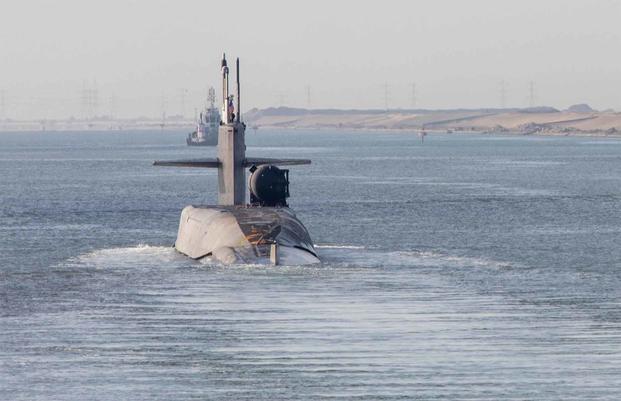Attacks on U.S. bases in the Middle East spiked over the weekend as the Pentagon moved ships into the area and revealed more about the level of support it's providing to Israel.
The Pentagon's top spokesman, Brig. Gen. Pat Ryder, told reporters Monday that U.S. bases in Iraq and Syria have now been attacked by rockets and drones 38 times since Oct. 17 -- an increase from the 27 attacks the Pentagon revealed last Tuesday. Six attacks occurred over the span of the weekend, and one happened early Monday morning.
Ryder also revealed that the number of injured service members has climbed to 46 since the attacks began on Oct. 17.
Read Next: Inside the Army's Mad Dash for Recruiters After Graduating Only Half the Number Needed
The injuries included five more diagnoses of traumatic brain injuries, or TBI, at the al-Tanf Garrison in Syria and 20 other minor injuries spread out between al-Tanf and the al Assad and Erbil air bases in Iraq. Ryder also said that two service members who were previously diagnosed with TBI have also been flown to the American base in Landstuhl, Germany, for further examination and care.
However, none of these additional injuries has occurred since the U.S. conducted its retaliatory strike on Oct. 26, which included a fighter jet attack on two locations in eastern Syria that were linked to Iran's Islamic Revolutionary Guard Corps.
Ryder explained that the rise in numbers is being attributed to "individuals initially dismissing the severity of the injuries they've sustained ... or symptoms presenting themselves after initial reporting."
The Pentagon has attributed these attacks to local militias in the area, but Ryder has previously said that "by virtue of the fact that they're supported by Iran, we will ultimately hold Iran responsible."
Amid those attacks, U.S. Central Command made a rare announcement of the deployment of a nuclear-powered submarine to the Middle East in a social media post Sunday.
The Navy has a handful of submarines deployed at any moment conducting nuclear deterrence patrols or a number of other missions, but the details around those movements are one of the more closely guarded secrets within the military. Whenever a submarine's location is publicly revealed, it is largely understood to be a deliberate move aimed at accomplishing a specific foreign policy goal.
The post showed an Ohio-class submarine transiting the Suez Canal. A defense official confirmed to Military.com that the submarine in question was a guided-missile -- not a ballistic missile -- submarine. Thus, it is armed only with up to 154 Tomahawk cruise missiles and not nuclear weapons.
Both kinds of Ohio-class submarines are powered by nuclear reactors.
The submarine appears to have crossed the Suez Canal within a day of the USS Dwight D. Eisenhower and its accompanying three-ship strike group. They, along with the submarine, will join the USS Bataan and USS Carter Hall, which hold the majority of a Marine Corps expeditionary force, in the waters off the Middle East.
Ryder, speaking specifically about the submarine, said that the aim of the move was to "further support our deterrence efforts in the region."
On Friday, the Pentagon also admitted that it has been flying drones over Gaza "in support of hostage recovery efforts." The admission came after The New York Times reported Thursday that U.S. special operations forces were operating MQ-9 Reapers over the region.
Defense officials have offered no other details on the flights except that they began "after the Oct. 7 attack by Hamas on Israel," though the military typically tends to avoid discussing reconnaissance and intelligence-gathering methods.
Despite this growing buildup of U.S. military forces in the region to support Israel, the Pentagon has firmly maintained that it sees the attacks on bases in Syria and Iraq as separate and unrelated to the conflict between Israeli forces and Hamas. That war began earlier this month when Hamas brutally attacked Israel, killing about 1,400 Israelis.
"Our forces are in Iraq and Syria for one purpose -- which is the enduring defeat of ISIS. ... This is separate and distinct from the situation in Israel," Ryder told reporters last week, referring to the Islamic State terrorist group.
-- Konstantin Toropin can be reached at konstantin.toropin@military.com. Follow him on X at @ktoropin.
Related: 300 More Troops Head to Middle East Amid Constant Drone and Rocket Attacks














